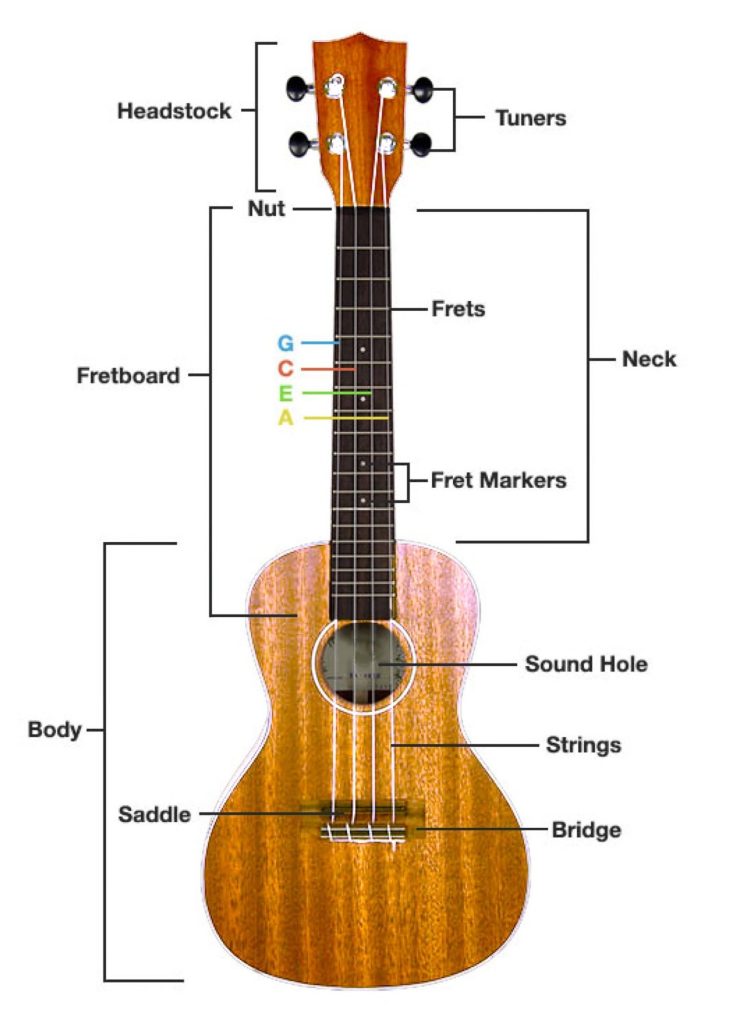Knowing the parts of a ukulele will help you understand how to play it and best care for it.
Headstock
The top part of the ukulele that holds the tuners. It can be slotted or solid, which affects tuner placement but not sound.
Tuning Pegs
Also called tuners or machine heads, these adjust string tension to change pitch. Two types:
- Friction tuners (behind the headstock)
- Geared tuners (on the sides)
Neck
Connects the headstock to the body. Usually wood, it’s where you place your fingers to play notes and chords.
Nut
A small ridge between the headstock and neck. It spaces and slightly raises the strings above the fretboard, affecting playability.
Fretboard & Frets
The fretboard sits on the neck and has metal frets that divide it into notes. Pressing strings between frets changes the pitch.
Fret Markers
Dots or shapes on specific frets (usually 3rd, 5th, 7th, 10th, 12th) to help players navigate the fretboard.
Strings
Usually nylon, sometimes metal-wound on larger ukes. Standard tuning is G-C-E-A, but not in pitch order. Thicker strings = lower pitch.
Body
The main part of the ukulele that amplifies sound. Made from woods like koa or mahogany. The front is the soundboard.
Sound Hole
The round hole in the body that projects sound. Often decorated with a rosette (mostly aesthetic today).
Bridge
Located below the sound hole, it anchors the strings and transfers vibrations to the body. Common types: tie-bar, slotted, pin, and string-through.
Saddle
The saddle sits on top of the bridge. It keeps the strings spaced evenly and helps hold them at the right height. Like the nut, it has small grooves to keep the strings in place.


